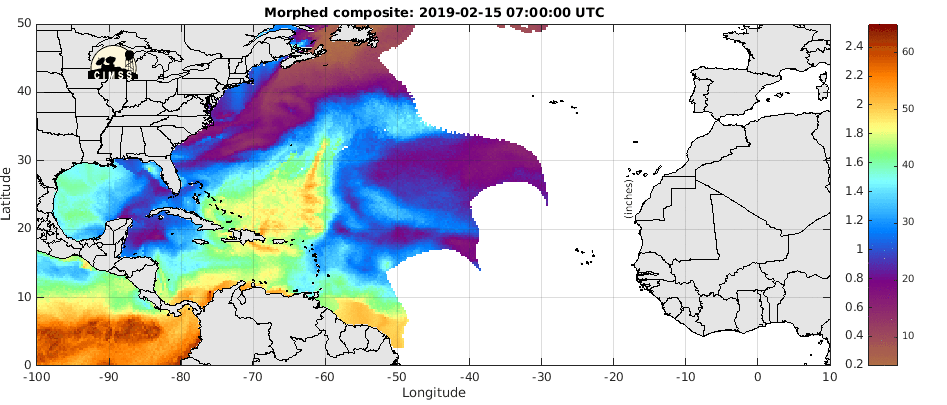The last couple of days have been fairly interesting in terms of tropical activity. The biggest story has been tropical storm Washi, which could become one of 2011's most deadly disasters, with the current death count nearing a thousand in southern Philippines. It has not been a major headline but it has been mentioned in several websites, like CNN, the Australian, Washington Post, and other sources.
The Moderate Resolution Imaging Spectroradiometer (MODIS), on NASA's Terra satellite was able to capture this visible image of the cyclone on December 16. While not a particularly powerful storm, the combination of heavy rains and the island's terrain (topography, flora, agriculture) are likely the main cause of the deadly flash floods and landslides that claimed the lives of hundreds and left thousand of others homeless.
 |
Elsewhere in the tropical region, some interesting activity has been occurring over the Caribbean region, as the remnants of a cold front affects the area (seen as the line of moisture moving southward in the CIMMS TPW loop) . While these cause great changes in temperatures in the continental U.S., here they're mostly known for modest changes and temperature and light rain. The NWS in San Juan, PR calls for a low to medium chance of showers during the next couple of days as more of these systems keep affecting the area.
To put things in a clearer perspective, the North American Mesoscale Model (NAM), as well as other numerical models, continue to forecast several bands of these frontal systems to move into, and linger, over this region the next couple of days.
 |
| Forecast for sea level pressure (contours), precipitation (colors), and vorticity maxima (red crosses) from the NAM model. Image from UW's weather loops. |
 |
| Mosture convergence cross section |





No comments:
Post a Comment